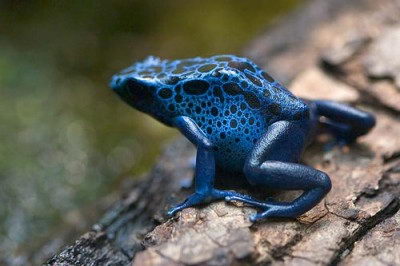Are you ready for the most exciting poison dart frog facts for kids including poison frog diet, habitat, and behavior. Poison dart frogs are among the most famous frogs in the world. They are also referred to as simply poison frogs, arrow-poison frogs, and poison-arrow frogs.
Alongside bullfrogs and hop toads, nearly everyone has heard of these deadly poison dart frogs. Rainforest hunters eagerly search these frogs because of their small size and colorful appearance and perhaps due to their toxic properties which makes them dangerous of the dangerous amphibians. However, you’d be thinking as to why or how these frogs are toxic? Why, are ever-increasing hobbyists keeping these frogs if they are really toxic? Besides, if these amphibians are often bred in captivity why does one never come across new hobbyist-keepers dying by the score due to the frogs? Should we not take the poisonous nature of dart frogs merely as tales? At the outset, let us try to figure out answers to some of these oft-heard beliefs.
The poison dart frogs are a large group of neotropical frogs that belongs to the family of Dendrobatidae. The family comprises of 175 species, some of which are least understood while others are famous. However, there are only three species that tends to produce highly virulent skin toxins; whereas others secretes of mild toxicity. So, why have we not heard any accidental deaths caused by the poison of poison frogs? Because, for some reason, when these frogs are caught from the wild to keep them in captivity, their toxicity quickly diminishes. Even the most dangerous frog can become toxic-free after being kept in captivity for quite a few months. The reason is still unknown as to why it loses its toxicity once they are taken from the wild.
Poison Dart Frog Facts For Kids
- Poison dart frogs are one of the most brightly-colored creatures on the planet earth. The color of the skin ranges from gold, blue, yellow, black, to the red, copper, and green.
- Some poison frogs show unusual habits in that they’re often seen to carry both eggs and tadpoles on their back. This is called ‘backpacking’ which is, of course, not an unusual behavior in amphibians.
- The average lifespan of poison frogs is 3 to 15 years in the wild.
- They are classified as ‘threatened’ by the International Union for the Conservation of Nature.
- The group of poison frogs is called ‘Army’.
- Poison dart frogs are smaller species with the length equal to the size of a paper clip.
- Many poison frogs range from 1.5 cm (0.59 inch) to 6 cm (2.4 inches) in length.
- The weight of these species measures around 2 grams. They show aposematic patterns to warn potential predators.
- They lay eggs in plants, exposed roots, and in leaves, and in other moist places.
- Poisonous dart frogs have evolved a variety of adaptations to survive and thrive in their tropical environments

Image Courtesy of Luis Louro (Flickr)
Where Do Poison Dart Frogs Live | Poison Dart Frog Facts For Kids
Poison frogs are found in the humid, tropical environments of Latin and Central America. They are endemic to the tropical rainforests of Brazil, Venezuela, Peru, Panama, Hawaii, Ecuador, Costa Rica, French, Guiana, Colombia, Guyana, Suriname, Bolivia, and Nicaragua. The poison frogs typically build their habitats in tropical or subtropical high-altitude shrubland, tropical and moist lowland forests including freshwater marshes, montanes, swamps, lakes, and rivers. Many species are found in rural gardens, lowland grasslands, moist savanna, plantations, and premontane forests.
What Do Poison Dart Frogs Eat | Poison Dart Frog Facts For Kids
Poison frogs are known to eat ants, termites, and beetles. Scientists believe that they have these frogs digest plant poisons which are carried by their prey. However, in captivity they are not only deprived from their natural habitats but also from these preys which is why they never develop venom in captivity.







Leave a Reply